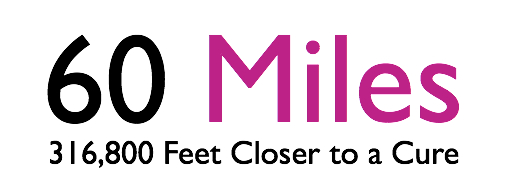A lot of first time 3-Day walkers will ask, “What should I do for fund raising?” and there is a lot of advice out there. I could probably spend all year describing the different ways one could do fund raising and still not have covered everything. My favorite piece of advice for new walkers is simple. Start early, start small.
Starting early sounds like pretty sound advice that everyone should follow, but a lot of people forget this key part of fund raising. You’re going to have ups and you’re going to have downs as you go through trying to raise all the money that you can in the fight against breast cancer. Some weeks you will have all sorts of donations from all corners, while others you may not have any. With this in mind, why not start the fund raising roller coaster earlier? When you start earlier, you don’t have to worry about raking in a ton of money every week because you have more weeks to gather donations. While it would still be great if you were getting tons of donations per week, it lets up the pressure. Besides, isn’t it a much better feeling to be signing up for the walk and have $700 more than you needed than to be signing up and have $700 less than you need? It just takes off a lot of stress when you have more time to get the funds raised.
Let’s talk about starting small now. I know, you’re probably saying “Wait! I have to raise $2300, I should be starting big and not small!” I understand, everyone that has to do the walk has to raise the same amount and a lot of people choose to make their goal higher. When I say to start small, I don’t mean to aim to only get $5. What I mean is to have a fund raiser that requires minimal effort and gets you some donations really quick. A couple of good examples would be: sending out e-mails to friends, sending out letters to family, posting on Facebook. This year, I decided to go to a couple of neighbors that I knew were home. I spent a very little time telling them about what I was doing and they made donations. It was a great start! I’ll be honest, the whole idea of starting small is simply a way of saying, “start in a way that you will have some success and little effort,” because as humans it’s a lot easier to continue on with something when you have not done a whole lot and had great success than if you had done a massive amount of work and garnered a very small amount of success.
Along the same lines of starting small. I realize that there are fund raisers that you are going to want to do that require a large time investment. I’m not going to deter you from doing them. What I will recommend that you do is to stagger small time investment fund raisers with the large time investment ones, so if the one that requires a lot of time doesn’t work out, you have something to look forward to that does knock it out of the park.
As you participate in future 3-Day walks, you will start to feel out what fund raising opportunities work best for you and you don’t have to worry so much about starting small. You can worry about the things that you have found to be tried and true and go from there. Good luck getting out there and fund raising everyone!


